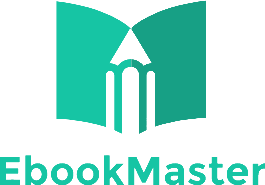
Download Report IHS CEH Report : Nitrobenzene (Chemical Economics Handbook 2019)
PDF by S&P Global Commodity Insights; IHS Markit
Information
Format: PDF Language: English Pages: 33 Publisher: S&P Global Commodity Insights; IHS Markit Publitshion date: 2019 ISBN: 140060
$49
Delivery time: Maximum 24 hours
Description
Nitrobenzene is the primary raw material for the production of aniline, which in turn is used in the production of methylene diphenyl diisocyanate (MDI). Consumption of nitrobenzene for aniline accounts for 100% of global nitrobenzene consumption; therefore, supply/demand in the nitrobenzene market is closely tied to demand for aniline for MDI manufacture. MDI is consumed along with propylene oxide polyols in polyurethane (PU) foams. These are mostly rigid foams and are used in construction and appliances. As a result, consumption of MDI, as well as aniline and ultimately nitrobenzene, largely follows the patterns of the leading world economies and depends heavily on construction/remodeling activity (residential and nonresidential), automotive production, and original equipment manufacture (OEM). Consumption of nitrobenzene for aniline is expected to follow MDI consumption, at an average annual growth rate of about 5%. The Indian Subcontinent and Central Europe are expected to see the largest increases in demand for nitrobenzene, with average annual growth rates of almost 24% and 12.5%, respectively, during the forecast period to 2023.
Nitrobenzene (NBZ) is a water-insoluble, pale yellow oil with the chemical formula C6H5NO2. Nitrobenzene is the primary raw material for the production of aniline, which in turn is used in the production of methylene diphenyl diisocyanate (MDI). Consumption for aniline accounts for 100% of global nitrobenzene consumption; therefore, supply/demand in the nitrobenzene market is closely tied to demand for aniline for MDI manufacture. Aniline can also be used for the production of rubber chemicals and, on a smaller scale, for the production of dyes, pharmaceuticals, and other chemical substances.
MDI is consumed along with propylene oxide polyols in polyurethane (PU) foams. These are mostly rigid foams and are used in construction and appliances. A much smaller amount of MDI is used in flexible PU foam used primarily in furniture and transportation. As a result, consumption of MDI, as well as aniline and ultimately NBZ, largely follows the patterns of the leading world economies and depends heavily on construction/remodeling activity (residential and nonresidential), automotive production, and original equipment manufacture (OEM). Global MDI consumption is expected to grow at an average annual rate of 5.3% between 2018 and 2023. NBZ consumption for aniline is expected to follow closely, at an average annual growth rate of 5.2% in the same forecast period.
The major shareholders of NBZ in 2018 were Wanhua Chemical (18%), BASF SE (15%), Covestro (12%), Huntsman Group (7%), and Connell Chemical (4%). The biggest change in recent years has been the name change of Bayer to Covestro in 2015. Expansions by BASF, Covestro, and Wanhua are expected during the forecast period. Approximately 2.0 million metric tons of NBZ capacity is expected to be added over the next five years, reaching close to 13.7 million metric tons of NBZ capacity by 2023.
The Indian Subcontinent and Central Europe are expected to see the largest increases in NBZ demand, with average annual growth rates of 23.7% and 12.6% per year, respectively, during the forecast period. Demand in Northeast Asia (driven by China) and North America (driven by the United States) will also increase at a healthy pace, with growth rates higher than 5% during 2018–23. Consumption in Japan is expected to remain stable during the same time period, while the CIS and Baltic States region is the only one forecast to see a decline in NBZ demand. Additional MDI capacity/production is the predominant factor for increased production and consumption of aniline, although in some cases the aniline is being imported.
China is the largest player in the NBZ market, accounting for 40% of global NBZ consumption in 2018. China is the dominant force in Northeast Asia, accounting for over three-fourths of the region's NBZ demand. In 2018, Chinese consumption of NBZ was 3.1 million metric tons and it is expected to reach over 4.3 million metric tons by the end of the forecast period.
Western Europe is the second-largest market for NBZ and represented one-fourth of global NBZ demand as of 2018. Demand for NBZ in Western Europe is forecast to grow at an average annual rate of 3.3% over the next five years, reaching over 2.2 million metric tons of NBZ consumption by 2023.
The United States is the third-largest NBZ market. Demand for NBZ in the United States is forecast to grow at a healthy annual rate of 5.8% during 2018–23, corresponding to an increase of about 371,000 metric tons. Demand for NBZ in the United States is closely linked to US consumption of aniline. US housing starts and construction/remodeling activity both drive demand for MDI. US NBZ consumption for aniline is projected to grow at an average annual rate of 5.8% per year through the end of the forecast period.
$49
Delivery time: Maximum 24 hours
